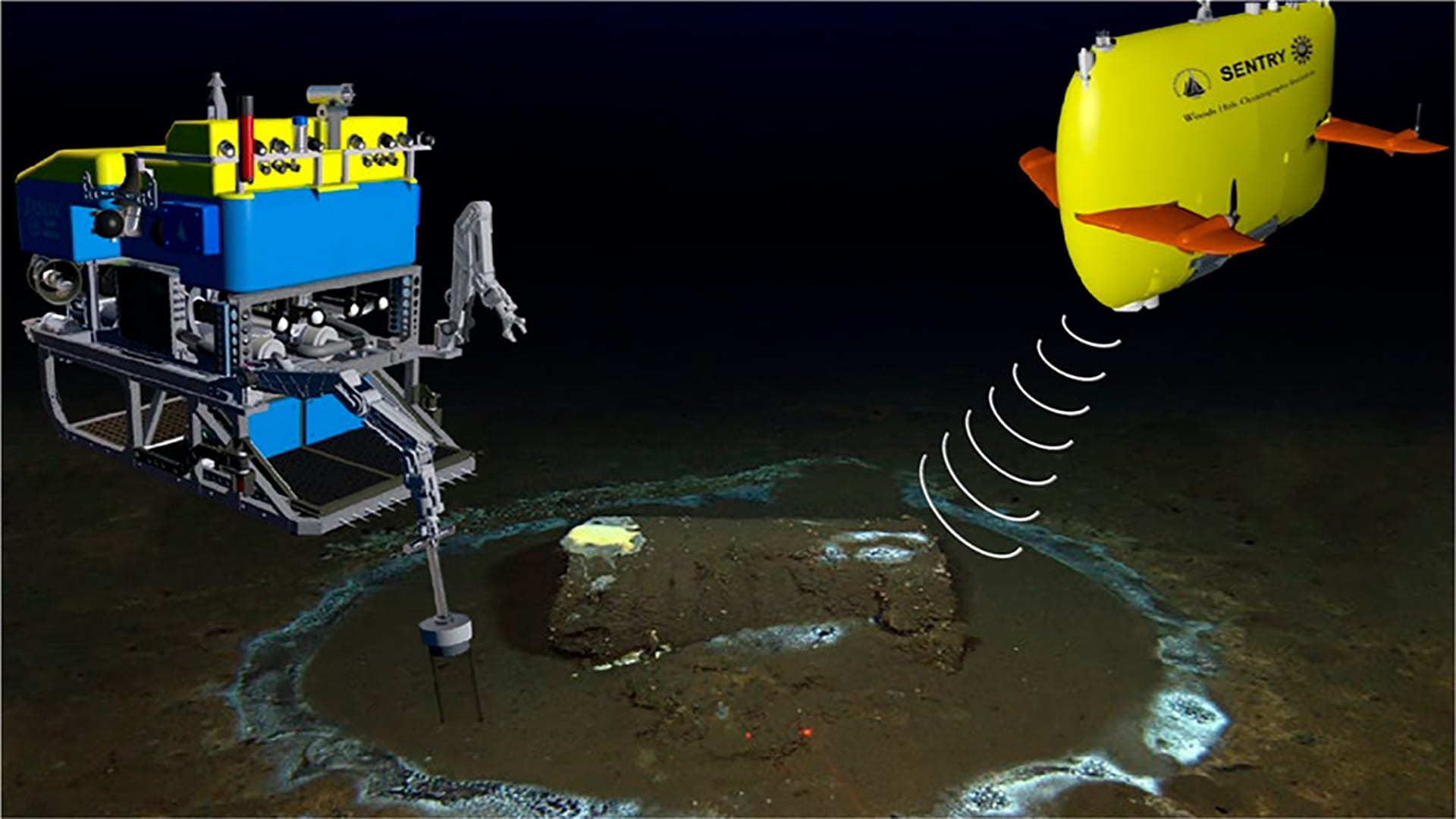WHOI-assisted study finds ocean dumping of DDT waste was “sloppy”
People may forget, but the ocean does not. Decades ago, the seafloor between Los Angeles and Catalina Island became the dumping ground for what is estimated to be as many as half a million barrels of waste containing the carcinogenic pesticide DDT. Those barrels, and the “sloppy” way in which they were disposed, were long-forgotten until scientists and engineers aboard the research vessel Atlantis rediscovered a few dozen, many now rusting away and leaking their contents into the surrounding sediment, and re-opened the debate about what to do about this toxic legacy.
An investigative report published this week in the LA Times, based on a 2019 paper from Environmental Science & Technology, features the WHOI-operated deep-submergence vehicles ROV Jason and AUV Sentry working consecutively and close to shore from Atlantis to map and sample the site. Samples went to the WHOI-based Organic Geochemistry Analysis Lab, which found concentrations of DDT in seafloor sediments up to 40 times greater than at a nearby Superfund site.
The surveys were part of expeditions led by UC Santa Barbara geochemist David Valentine to study naturally occurring seafloor methane seeps nearby.
Read the full article: https://www.latimes.com/projects/la-coast-ddt-dumping-ground/

